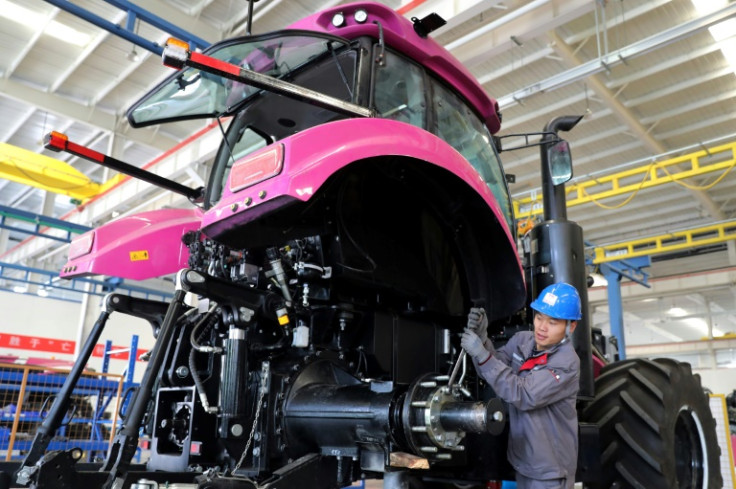China Factory Activity Cools In April As Recovery Challenges Loom

China's manufacturing activity contracted in April, official figures showed Sunday, due to tapering global demand and slow domestic recovery after Covid-related curbs were lifted.
The official manufacturing purchasing managers' index (PMI) -- a key gauge of Chinese factory output -- fell unexpectedly to 49.2 in April from 51.9 in March, and below the 50-point mark that separates expansion and contraction in activity, data from the National Bureau of Statistics (NBS) showed.
Analysts polled by Bloomberg News had expected April factory activity of 51.4.
The drop comes after February recorded the highest reading in more than a decade as factories returned to normal following a surge in Covid cases.
China's economy grew 4.5 percent in the first three months of the year as the country reopened after dropping strict health controls that helped keep the coronavirus in check but battered businesses and supply chains.
But the world's second-largest economy is also beset by a series of other crises, from a debt-laden property sector to flagging consumer confidence, global inflation, the threat of recession elsewhere and geopolitical tensions with the United States.
The official non-manufacturing PMI, which measures growth in the services and construction sectors, fell to 56.4 from 58.2 in March.
The March reading was the highest since May 2011, as the country saw a surge in demand for travel, entertainment and other leisure services unavailable for nearly three years during the pandemic.
The government has set a comparatively modest growth target of around five percent this year, a goal Premier Li Qiang has warned could be hard to achieve.
The Communist Party's top policy-making body said in a statement Friday that the economy still faced headwinds from weak demand at home and the slow pace of reforms.
"China's economy is mainly in the process of recovering, with (internal) driving forces still weak and demand insufficient," the Politburo said, according to a report by state-run Xinhua News Agency.
"Economic transition and upgrading face new headwinds, and hardships... are still to be overcome to promote high-quality development."
Beijing has promised further state support for the private sector, which is still reeling from a regulatory crackdown on the property, technology and private education industries.
Policymakers are also looking for ways to push up domestic demand, as China's export and manufacturing sectors struggle amid tepid global demand.
One bright spot in recent months has been households spending piled-up savings on travel.
Bookings for air and train tickets and hotel reservations for the five-day Labor Day holiday starting Saturday all surpassed the levels recorded in the same period in 2019, before the pandemic hit, according to online Chinese travel agency Fliggy.
"China's service sector continues to grow strongly while the manufacturing sector shows signs of weakening," Zhang Zhiwei, chief economist at Pinpoint Asset Management, said.
"These mixed signals will likely keep the pressure on the government to continue its supportive fiscal and monetary policies in the second quarter," he said.
© Copyright AFP 2024. All rights reserved.




















